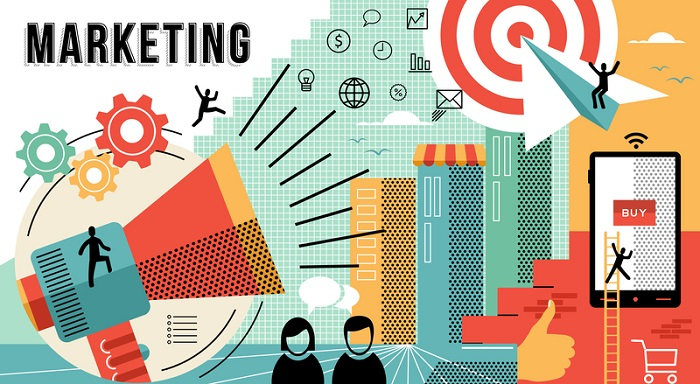
 Data Structure
Data Structure Networking
Networking RDBMS
RDBMS Operating System
Operating System Java
Java MS Excel
MS Excel iOS
iOS HTML
HTML CSS
CSS Android
Android Python
Python C Programming
C Programming C++
C++ C#
C# MongoDB
MongoDB MySQL
MySQL Javascript
Javascript PHP
PHP
- Selected Reading
- UPSC IAS Exams Notes
- Developer's Best Practices
- Questions and Answers
- Effective Resume Writing
- HR Interview Questions
- Computer Glossary
- Who is Who
What is Trigger Marketing - Types, Examples, Advantages
Introduction: What is Trigger Marketing?
Trigger marketing, also referred to as trigger-based marketing or trigger-campaign, is an event-based marketing strategy that is launched in response to a specific activity, such as leaving your online shopping cart unattended, or to offer an event-based problem's solution, such as solutions for hair loss or weight loss, to trigger a particular behaviour or identify the essential components of the customer's lifestyle.
Triggers like emails and notifications prompt consumers to use your website or app or to see similar products, which increases the likelihood that they will make a purchase. One of the numerous triggers used by businesses to continually encourage their clients to stay on their website longer is cart abandonment and related searches.
Marketing with triggers is quite successful. A recent Blueshift Report found that mobile push triggers are 1490% more successful than batch push alerts and that trigger-based marketing emails are 497% more effective than batch and blast emails. Because it is innately relevant and perfectly scheduled, trigger marketing, also known as event-based marketing, is extremely effective. Additionally, it enables you to completely automate, segment, tweak, and personalise your marketing campaigns and communications. This frees you up to concentrate on optimising performance and finetuning your campaign.

Examples of Trigger-based Marketing
Here are some examples of typical events used in trigger-based marketing to get you started if you're just starting started
1. Welcome messages
When someone subscribes to your service, chooses to receive your newsletter, or registers an account with you, send them your welcome message. These messages should be as specific as possible. They frequently represent your first direct, one-on-one interaction with a consumer, giving you the chance to establish rapport and gain their confidence.
2. Win-Back and Follow-Up Messages
These can be reminders just, like an email about a shopping cart that was abandoned, or a reminder and an offer, like an email with a coupon code for a client who hasn't purchased in the last six months.
3. Messages that acknowledge purchases
A crucial moment occurs when a buyer makes an online purchase, particularly their first one. It is crucial to email them a quick confirmation of their order, their payment, and your gratitude since they have put their faith in you and given you, their money.
4. Messages of Customer Loyalty
To commemorate events like their birthday, their third (or any other number) purchase with you, the anniversary of their first purchase, etc., you may send them special offers or simply a straightforward, personalised note.
Types of Triggers in Marketing
Behaviour-Based Triggers
Tracking client behaviour online and gathering information about their online activity. This keeps a personal connection open with your clients and fosters their ability to trust you.
Utilizing site search to suggest things that are relevant to those your buyer was looking at
Offers and guidance ? Providing your consumers with discount coupons, coupon codes, and guidance on the products they are considering buying has a higher likelihood of resulting in a sale.
On-site validation ? You can also obtain social validation through trigger marketing by encouraging your consumers to submit reviews of the goods they buy. For instance, "You just bought a phone. Could you please leave a review on our website?
Social pattern triggers ? By suggesting related products to your consumer based on their past purchase habits, you might influence their decision to consider buying those items as well. Messages like "Customers who bought the iPhone X also bought the Air Pods" or others of a like nature.
Triggers Based on Engagement
Do your visitors interact with your website enough? Theoretically, only 40-47% of your clients visit your website directly as a result of the targeted adverts. By arousing customers' interest, engagement-based triggers assist you in raising engagement rates, which in turn aid in higher conversion rates.
Subscriptions &miuns; Reminding clients that their subscriptions are about to expire shows them that you care, which helps your business build a stronger bond with them.
Social spike ? Social media is a fantastic tool for spreading the word about your company or brand. Responding to those who tweet about your company fosters a more personal connection with your clients.
Event-Based Triggers
Customer loyalty and repeat business are both sparked by showing your clients that you are concerned about their needs and priorities. Events like a company's anniversary or a customer's birthday might be seen as chances to present clients with enticing deals that are only good for a very limited period of time.
Emotional Triggers
Customers are more inclined to interact and purchase from you if they can emotionally relate to your advertisement. Solutions for weight reduction, hair loss, skin care, meal delivery, etc. are other common emotional triggers that can pique clients' attention and have success rates as high as 80%.
Advantages of Trigger Marketing
Trigger-based marketing has many wonderful advantages, such as ?
Timeliness and Relevance ? With trigger-based marketing, you may act in highly relevant ways and communicate in relevant ways at the ideal moments. Events (or triggers) can be used to start quick, automatic activities. This implies that it will reach your client or potential client at the appropriate moment. Instead of when it is most convenient for you to deliver it, they will get it when it is most pertinent and convenient for them to do so. Utilizing the channel that is most appropriate for the communication trigger can boost your prospects' receptivity and esteem for you.
-
Efficiency and Automation ? Your campaign may be more accurate and efficient with automation. You won't ever miss a chance to interact with your consumers or prospects if predetermined triggers start activities or communications on autopilot. Other automatic operations, such mass email dumps, cannot be customised or personalised to the same extent as specified triggers and the activities they start.
Your team and you may concentrate on the creative components of your campaign rather than the tedious activities of segmenting lists, delivering messages, or updating data when your operations are automated but still extremely relevant.
Personalization and customization ? For every stage of your client journey, trigger marketing is a terrific method to build specialised and targeted campaigns. 72% of customers believe they only interact with tailored communications, making personalization an essential part of marketing strategy. Every step of the process, from the welcome email to the post-purchase and retargeting campaigns, may be customised to your consumers' needs in order to gain their confidence.
Enhanced customer satisfaction, loyalty, and experience ? For success, giving customers a wonderful experience is essential. Your consumers will feel that you are taking care of their needs by sending them individualised communications that are on-point in both content and timing. Customers that feel appreciated and well-cared-for are more likely to make larger, more frequent purchases and spend more money each purchase. Higher levels of client loyalty are a result of excellent customer service and satisfaction. Building trust with your audience via the use of trigger marketing and automation enables you to re-engage them and keep them as clients. Increased customer advocacy, a crucial component of successful digital marketing, is also a result of increased customer loyalty.
Brand awareness has increased ? At every point of the purchasing cycle, you should keep your leads satisfied and make them feel valued in order to keep them thinking about you when they're ready to make a purchase. They think of you first while recommending you to other people. In addition to direct sales, a trigger marketing strategy should focus on brand recognition and customer advocacy since they will ultimately result in increased conversion rates.
At each stage of the customer journey, nurture leads ? The greatest strategy to retain leads until conversion is to nurture them and keep them interested with pertinent, educational, and practical content at each stage of the customer journey.

